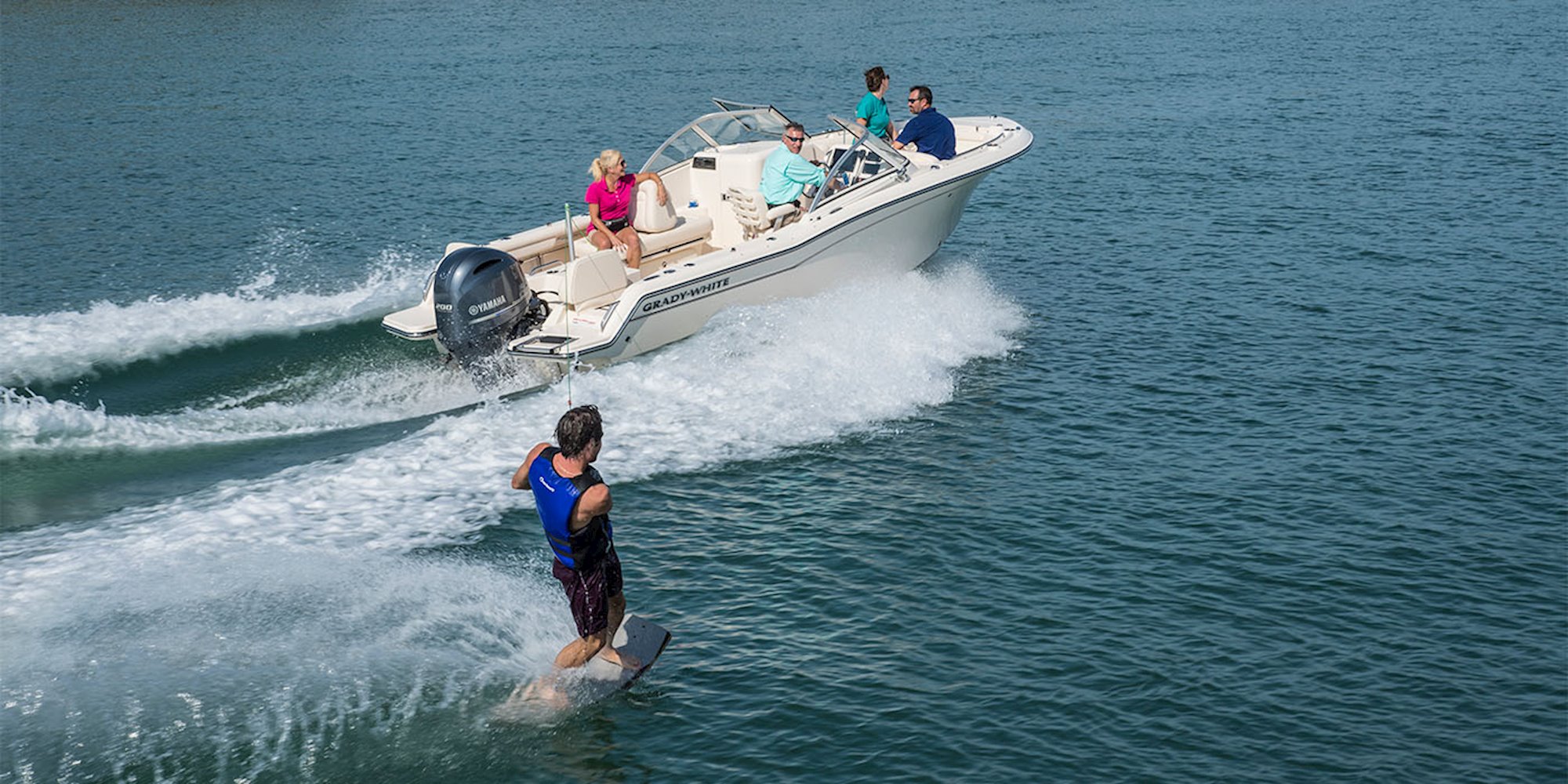
Surf’s up!
One of the many benefits of owning a Grady-White is that you can treat family and friends to a wide range of entertaining activities. From fishing in the morning to an afternoon of skiing, tubing, or wakeboarding, you can do it all on any Grady model.
But before you head out, it’s important to be prepared. Read on for safety information and expert tips on equipment and watersports towing—then get ready to hit the water!
Life Jackets Are a Must
Any time you’re boating, there should be a life jacket on board for every person on the boat—plus their dog. Children must wear a life jacket at all times when on the water, and each state has its own age requirements. In Florida, all children age 6 and under must wear a life jacket.
To provide protection, a life jacket must also fit properly. This U.S. Coast Guard brochure will tell you what you need to know about choosing the right life jacket for the person it is protecting.
Inspect Skis, Tubes, and Wakeboards
Before you hit the water, inspect the equipment to make sure none of their parts are frayed or broken. Check the manufacturers’ recommendations for specifics on the use of the product (such as weight limits and maximum/minimum speed.) Only use equipment designed specifically for towing a person behind a boat.
How to Communicate with the Person in the Water
Before the person you’ll be towing gets into the water, be sure that they know how to communicate using hand signals. Here are a few basic hand signals to review.
- Thumbs up: Go faster.
- Thumbs down: Slow down.
- Patting the top of the head: Indicates the person is ready to stop.
- Hands together over head: If the rider has fallen, this signal indicates they’re OK.
Starting and Stopping Basics
Before you start the boat, identify a spotter. This person is responsible for watching and communicating the needs of the person in the water to the boat captain. As the captain of the boat, you should always be looking ahead.
Always turn off the boat engine before a person enters the water and before a person in the water approaches the boat to climb aboard. And before starting the engine, check the location of your tow rope to be sure it is not in a position to get caught in the propeller or get wrapped around the person in the water.
Make sure that everyone in the boat is securely seated, wearing a life jacket, and that no one is blocking your view of the waterway ahead. Don’t make sudden starts or stops without first alerting the riders in the boat.
While Towing Someone Behind You
Always steer clear of the shoreline, obstacles in the water and other boats.
When returning to the person in the water after they have finished their activity, keep them on the right side of the boat where you can more easily maintain visual contact.
